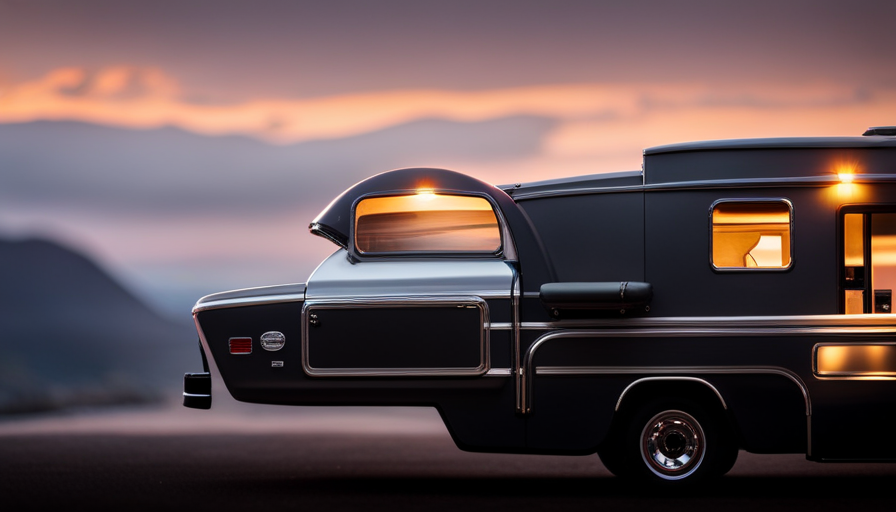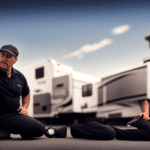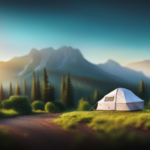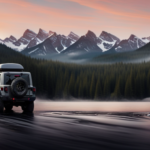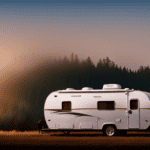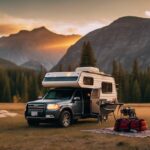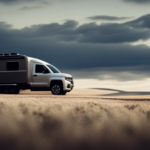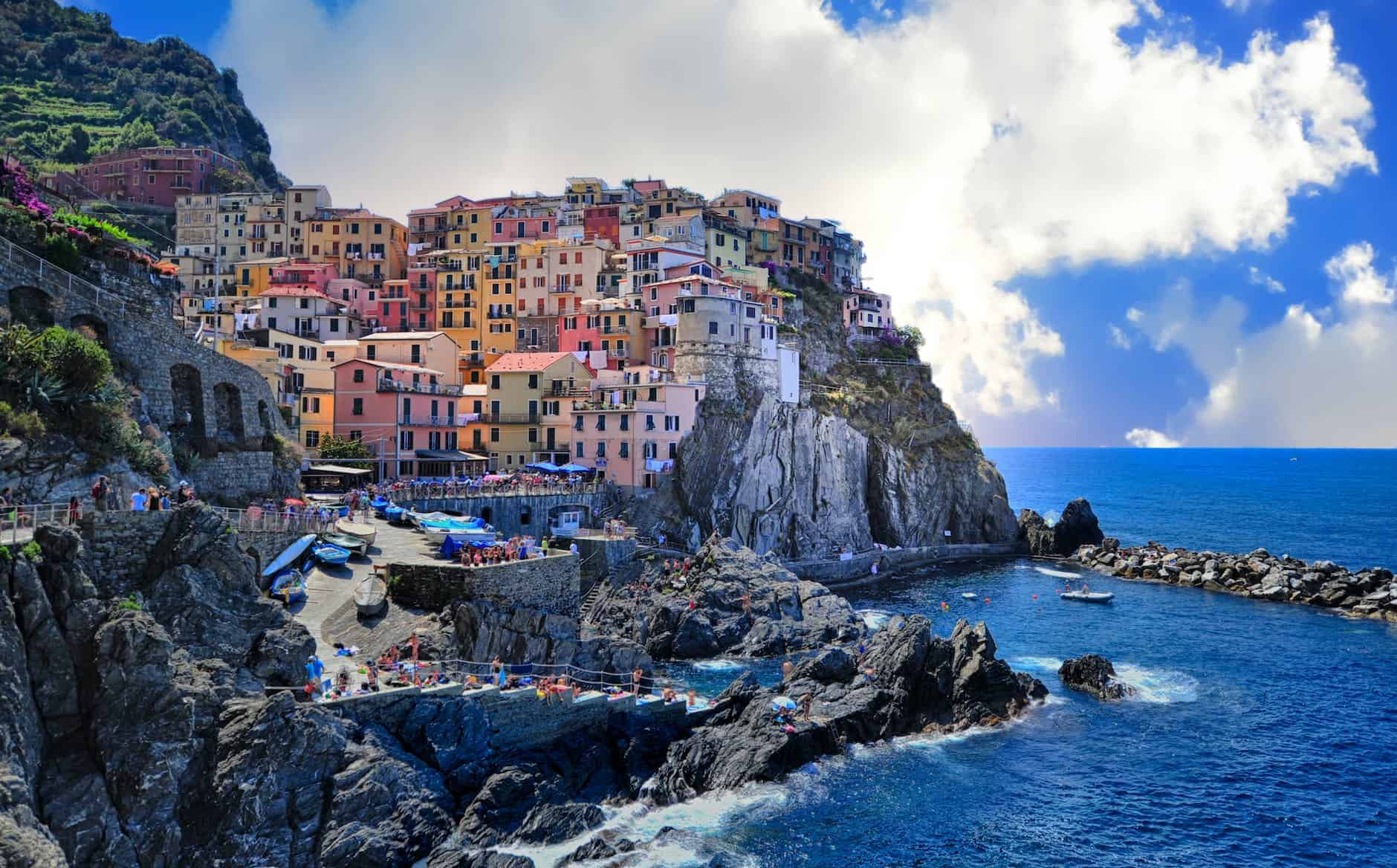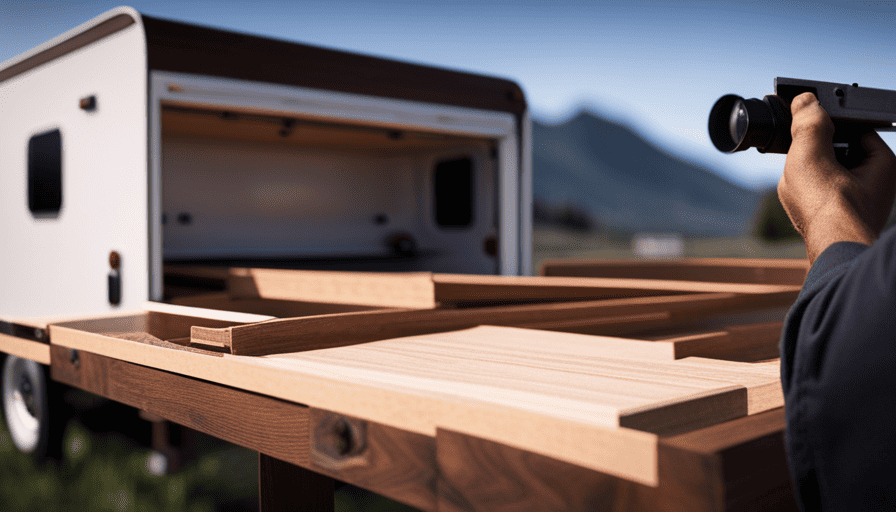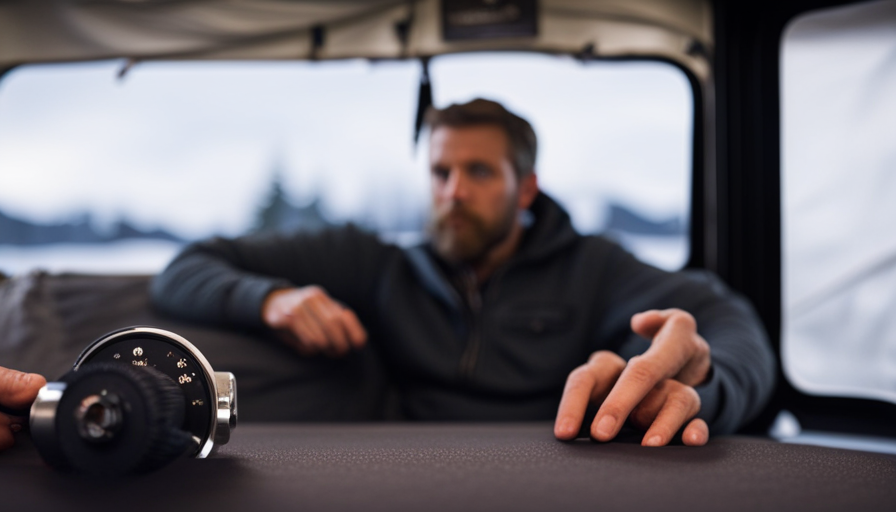Have you ever fantasized about embarking on a road trip, discovering new places, and reveling in the liberation of nature? If yes, then delving into the world of bumper pull campers might pique your interest.
These versatile recreational vehicles offer a convenient and affordable way to travel and camp in style.
A bumper pull camper, also known as a travel trailer, is a type of RV that is towed behind a vehicle using a bumper hitch. Unlike other types of RVs, such as motorhomes or fifth-wheel trailers, bumper pull campers are lightweight and can be easily towed by a variety of vehicles, including trucks, SUVs, and even some sedans.
In this article, we will explore what sets bumper pull campers apart from other types of RVs, the advantages they offer, and the features and amenities you can expect to find.
We will also provide tips for choosing the right bumper pull camper, essential equipment and accessories, campsite selection and set-up, maintenance and care, and how to make the most of your outdoor adventures with a bumper pull camper.
So, let’s dive in and discover the world of bumper pull campers!
Key Takeaways
- Bumper pull campers are versatile and affordable RVs that can be towed using a bumper hitch.
- They are lightweight and can be towed by various vehicles, making them a popular choice for outdoor enthusiasts.
- Bumper pull campers offer comfortable sleeping quarters, kitchen area, and bathroom facilities, making them perfect for families or groups of friends.
- Proper weight distribution, hitching, and safe driving practices are important for safe towing and enjoyable camping experience with a bumper pull camper.
Different Types of Recreational Vehicles (RVs)
If you’re thinking about hitting the open road and exploring the great outdoors, you’ll love the convenience and versatility of a bumper pull camper. These recreational vehicles (RVs) come in various types, each with its own unique features.
One important consideration when choosing an RV is its weight limits and towing capacity.
There are several different types of RVs to choose from, including motorhomes, fifth wheels, and travel trailers. Motorhomes are like a home on wheels, with everything you need conveniently located in one vehicle. Fifth wheels are towed by a pickup truck and provide a spacious living area with a raised section over the truck bed. Travel trailers, on the other hand, are towed by a bumper hitch, making them easy to hook up and go.
Bumper pull campers, also known as conventional travel trailers, are a popular choice for many outdoor enthusiasts. They are towed by a hitch attached to the rear bumper of a vehicle, and they come in a range of sizes and styles to suit different needs. One advantage of bumper pull campers is their weight, which is typically lighter compared to other types of RVs. This means they can be towed by a wider range of vehicles, including SUVs and smaller trucks.
What sets bumper pull campers apart is their ease of use and maneuverability. With their simple hitching system, they can be quickly and easily attached to a tow vehicle, allowing you to hit the road in no time. So, if you’re looking for a versatile and convenient way to travel and explore the outdoors, a bumper pull camper might be the perfect choice for you.
What Sets Bumper Pull Campers Apart
One interesting distinction of these trailers is their ability to effortlessly glide behind your vehicle, like a graceful dancer following every move. Bumper pull campers are a popular choice among RV enthusiasts due to their unique features and advantages.
One key difference between bumper pull campers and fifth wheel campers is the way they are attached to the towing vehicle. Bumper pull campers are connected to the rear bumper of the vehicle, while fifth wheel campers are attached to the bed of a pickup truck using a hitch. This difference in attachment method affects the towing experience and overall maneuverability.
Bumper pull campers offer several advantages over other types of RVs. Firstly, they are generally more affordable and easier to tow, making them a great option for beginners or those with smaller vehicles. Additionally, the compact size and lightweight nature of bumper pull campers allow for easier maneuvering in tight spaces, such as campsites or parking lots. Another advantage is the ability to detach the camper from the towing vehicle, allowing for more flexibility in transportation and exploration.
In the next section, we will explore the advantages of bumper pull campers in more detail, highlighting why they are a popular choice among RV enthusiasts.
Advantages of Bumper Pull Campers
When you choose a bumper pull camper, you’ll enjoy the ease of towing and the maneuverability it offers. One of the biggest advantages of these campers is their compact size, which makes them easier to maneuver on the road compared to larger RVs. With a bumper pull camper, you can easily navigate tight turns and park in smaller spaces, giving you more flexibility in choosing your camping spot.
Another advantage of bumper pull campers is their affordability. These campers tend to be less expensive than their larger counterparts, making them a great option for those on a budget. Despite their lower price tag, bumper pull campers still offer a wide range of features and amenities. Many models come equipped with comfortable sleeping quarters, a kitchen area, and a bathroom, providing you with all the necessities for a comfortable camping experience.
In addition, bumper pull campers often have a lighter weight compared to other RVs, which means they can be towed by a wider range of vehicles. This makes them a versatile option for those who don’t own a heavy-duty truck or SUV.
In the next section, we’ll explore the various features and amenities that bumper pull campers have to offer.
Features and Amenities
When it comes to features and amenities, bumper pull campers have got you covered. First, let’s talk about the sleeping accommodations. These campers usually come equipped with comfortable beds that can easily accommodate multiple people, making it perfect for a family or a group of friends.
Secondly, the kitchen and dining area in a bumper pull camper are designed to make your camping experience as convenient as possible. With a fully equipped kitchen, you can cook your favorite meals just like you would at home.
Lastly, the bathroom facilities in these campers are a game-changer. They typically include a toilet, shower, and sink, providing you with all the necessary amenities during your outdoor adventures.
Sleeping Accommodations
Imagine yourself stepping inside a bumper pull camper, where you’ll find cozy sleeping accommodations that can comfortably fit a small family or a group of friends. The sleeping area is designed with comfort in mind, offering a variety of features and amenities to ensure a good night’s sleep.
Here are some highlights:
-
Choosing mattresses: The camper is equipped with high-quality mattresses that provide excellent support and comfort. You can choose between different firmness levels to suit your preferences.
-
Storage solutions: The sleeping area also includes clever storage solutions to maximize space. There are overhead cabinets, under-bed storage compartments, and built-in closets to keep your belongings organized and out of the way.
-
Blackout curtains: For those who prefer to sleep in a dark and quiet environment, the camper is equipped with blackout curtains that block out sunlight and reduce noise.
-
Privacy screens: In case you’re sharing the camper with others, privacy screens are available to create separate sleeping areas.
As you step into the kitchen and dining area, you’ll be greeted by a fully equipped space for preparing meals and enjoying delicious food.
Kitchen and Dining Area
In addition to comfortable sleeping arrangements, a bumper pull camper also offers a well-equipped kitchen and dining area. When it comes to cooking meals on the go, these campers’ve got you covered. The kitchen is typically equipped with a stove, oven, and microwave, allowing you to prepare a variety of delicious meals. You’ll also find a refrigerator to keep your food fresh and drinks cold.
The dining area is designed to comfortably seat everyone, providing a cozy space for meals and socializing. Storage solutions’re cleverly integrated into the kitchen area, with plenty of cabinets and drawers to store your cooking equipment and utensils. This ensures that everything’s easily accessible and organized.
Now that we’ve covered the kitchen and dining area, let’s move on to the bathroom facilities, which’re equally impressive.
Bathroom Facilities
Get ready to experience luxurious bathroom facilities in a bumper pull camper. One of the advantages of these campers is the ability to have a fully functional bathroom on the go. Here are three features that make the bathroom facilities in a bumper pull camper stand out:
-
Bathroom renovations: Many bumper pull campers have undergone recent bathroom renovations to provide a modern and comfortable experience. From updated fixtures to stylish décor, you’ll feel like you’re in a high-end hotel.
-
Portable toilets: Bumper pull campers often come equipped with portable toilets that are easy to use and maintain. These toilets are designed to be compact yet efficient, ensuring you have a clean and convenient bathroom option wherever you are.
-
Spacious showers: Say goodbye to cramped showers. Bumper pull campers offer spacious shower areas that allow you to comfortably freshen up after a long day of outdoor adventures.
Now that you know about the luxurious bathroom facilities, let’s move on to choosing the right bumper pull camper for your needs.
Choosing the Right Bumper Pull Camper
When you’re trying to decide on the perfect bumper pull camper for your needs, you’ll want to consider factors such as size, amenities, and style.
Proper maintenance and budget considerations are also important when making your decision. It’s crucial to choose a camper that fits within your budget and is easy to maintain in the long run. Look for a camper that has durable materials and a warranty to ensure that you won’t have to spend a fortune on repairs down the line.
Size is another important factor to consider. Think about how many people will be using the camper and how much space you need. You’ll want to make sure there’s enough sleeping space, as well as room to move around comfortably.
Amenities are also crucial. Think about what features are important to you, such as a kitchen, bathroom, or entertainment system.
Style is a personal preference, but it’s worth considering. Do you prefer a more modern or traditional look? Think about the overall design and color scheme that appeals to you.
Once you’ve chosen the perfect bumper pull camper, it’s important to learn about proper towing techniques and safety considerations. This will ensure that you can safely and confidently tow your camper on your adventures.
Proper Towing Techniques and Safety Considerations
When it comes to towing a bumper pull camper, there are a few key points to consider for a safe and smooth experience.
First, it’s important to properly distribute the weight of the camper to ensure stability on the road and minimize sway.
Second, hitching and unhitching the camper correctly is crucial to avoid any accidents or damage.
Finally, maintaining safe driving practices, such as staying within speed limits and keeping a safe distance from other vehicles, is essential for a stress-free journey.
Weight Distribution and Sway Control
To truly enhance your towing experience and ensure stability on the road, it’s crucial to have proper weight distribution and sway control for your bumper pull camper. Here are three key factors to consider:
-
Weight Distribution: Distributing the weight evenly across the trailer and tow vehicle is essential. This helps maintain balance and prevents the trailer from swaying. You can achieve this by using a weight distribution hitch, which redistributes the weight from the rear axle of the tow vehicle to the front axle and trailer.
-
Sway Control: Sway can occur when wind or passing vehicles push against the trailer, causing it to sway side to side. Sway control devices, such as sway bars or electronic systems, help minimize this movement and provide a more stable towing experience.
-
Proper Loading: Properly loading your camper is crucial for weight distribution and sway control. Ensure that heavier items are placed low and towards the front of the trailer, while lighter items are positioned towards the rear.
By understanding and implementing these weight distribution and sway control techniques, you can enjoy a safer and more stable towing experience.
Now, let’s delve into the next section about hitching and unhitching properly.
Hitching and Unhitching Properly
Ensure a smooth and hassle-free towing experience by mastering the art of properly hitching and unhitching your trailer. Hitching safety is of utmost importance to prevent accidents and damage.
When hitching your bumper pull camper, start by lining up your vehicle and trailer so that they are parallel and facing each other. Attach the hitch ball to the coupler on the trailer and make sure it’s securely locked in place. Then, connect the safety chains and electrical plug.
Finally, double-check that everything is properly secured before hitting the road. By following this proper hitching technique, you can ensure a safe and secure connection between your vehicle and trailer.
Maintaining safe driving practices is essential to keep you and others on the road safe.
Maintaining Safe Driving Practices
Maintaining safe driving practices is crucial in order to ensure the safety of yourself and other motorists on the road. One important aspect of safe driving is proper tire maintenance. Regularly checking the tire pressure and tread depth is essential to prevent blowouts and maintain optimal traction.
Additionally, it’s important to practice defensive driving techniques when towing a bumper pull camper. This includes maintaining a safe following distance, using your mirrors frequently, and being aware of your blind spots. It’s also important to anticipate potential hazards on the road and adjust your speed accordingly.
By following these practices, you can reduce the risk of accidents and ensure a smooth and safe journey in your bumper pull camper.
Transitioning to the next section, let’s now discuss the essential equipment and accessories for bumper pull campers.
Essential Equipment and Accessories for Bumper Pull Campers
Get ready for your next camping adventure with essential equipment and accessories that every bumper pull camper needs. Choosing the right camping gear is crucial for a successful trip.
Make sure to invest in high-quality tents, sleeping bags, and camping chairs that are durable and comfortable. Additionally, don’t forget to pack a portable stove and cooking utensils for delicious meals on the go.
Organizing storage space is also important when it comes to bumper pull campers. Utilize storage bins and organizers to keep your belongings neat and easily accessible. Consider investing in a roof rack or cargo carrier to maximize space and carry larger items such as bikes or kayaks.
To ensure a smooth transition into the subsequent section about tips for campsite selection and set-up, it’s important to be prepared. Before hitting the road, make a checklist of all the essential equipment and accessories you need. This will help you stay organized and avoid any last-minute scrambling.
So, get ready to hit the road and explore the great outdoors with your fully equipped bumper pull camper. Stay tuned for our next section on tips for campsite selection and set-up.
Tips for Campsite Selection and Set-Up
When it comes to choosing a campsite for our bumper pull camper, there are a few key points we always consider. Firstly, we look for campgrounds that offer accommodations specifically for bumper pull trailers, ensuring that we have the necessary space and hook-ups.
Secondly, we make sure to level and stabilize our camper to ensure a comfortable and safe camping experience.
Lastly, we prioritize hooking up utilities such as water and electricity to ensure we have all the necessary amenities at our campsite.
By keeping these tips in mind, we can set up a perfect campsite for our bumper pull camper.
Choosing Campgrounds with Bumper Pull Accommodations
Selecting campgrounds that offer accommodations for bumper pull campers can make all the difference in ensuring a stress-free and enjoyable camping experience. Here are some tips for choosing campgrounds that cater to bumper pull campers:
-
Look for campgrounds that are pet-friendly, so you can bring your furry friends along for the adventure.
-
Check if the campgrounds have designated areas for campfire cooking, allowing you to enjoy delicious meals under the starry sky.
-
Consider the amenities offered by the campgrounds, such as clean restrooms and showers, laundry facilities, and recreational activities.
-
Research the location of the campgrounds and choose those that are close to attractions or activities you’re interested in, like hiking trails or fishing spots.
-
Read reviews and ratings from other campers to get insights into the campground’s ambiance and customer service.
By selecting campgrounds that meet your specific needs, you can ensure a smooth and enjoyable camping trip.
In the next section, we will discuss leveling and stabilizing your camper for a safe and comfortable stay.
Leveling and Stabilizing Your Camper
Creating a level and stable environment for your home away from home will ensure a worry-free and comfortable camping experience. When it comes to leveling techniques for your bumper pull camper, there are a few options to consider.
One popular method is to use leveling blocks or ramps, which can be placed under the wheels to raise or lower the camper until it’s level. Another option is to use a leveling jack system, which can be manually or electronically controlled to adjust the height of the camper.
Once your camper is level, it’s important to stabilize it to prevent any rocking or swaying. This can be done by using stabilizer jacks or stabilizer bars. These devices can be attached to the frame of the camper to provide additional support and stability.
With your camper leveled and stabilized, you can now move on to the next step of hooking up utilities and getting ready to enjoy your camping adventure.
Hooking Up Utilities
To ensure a worry-free and comfortable camping experience, you’ll need to hook up utilities for your home away from home. Here are some key steps to follow for proper maintenance and safety precautions:
-
Water Connection: Locate the water hookup at your campsite and attach your hose securely. Make sure to use a water pressure regulator to prevent any damage to your camper’s plumbing system.
-
Electricity: Find the electrical pedestal and connect your camper’s power cord. It’s essential to check the voltage and amp rating before plugging in to avoid any electrical issues.
-
Sewer Hookup: Locate the sewer connection and attach your sewer hose tightly. Always use a sewer hose support to ensure proper drainage and prevent any leaks or odors.
-
Propane: Check the propane tank’s level and ensure it’s securely connected. Remember to follow safety guidelines when handling propane to prevent any accidents.
By following these steps, you can safely and efficiently hook up utilities for your bumper pull camper.
In the next section, we will discuss maintenance and care to keep your camper in top shape for your adventures.
Maintenance and Care for Bumper Pull Campers
What are some tips for keeping bumper pull campers in good condition?
Proper maintenance is essential for ensuring that your bumper pull camper stays in top shape. Regularly inspect the tires, brakes, and suspension is a good starting point. Make sure to check for any signs of wear or damage and address them promptly.
Cleaning and storage are also crucial aspects of maintenance. After each trip, give your camper a thorough cleaning, both inside and out, to remove any dirt or debris that could cause damage. When it comes to storage, keep your camper in a dry and secure location to protect it from the elements.
Troubleshooting common issues is another important part of caring for your bumper pull camper. Familiarize yourself with the owner’s manual and learn how to address common problems such as electrical issues, plumbing leaks, or malfunctioning appliances. Having the necessary tools and spare parts on hand can also save you time and frustration.
By properly maintaining your bumper pull camper, you can ensure that it will continue to provide you with many enjoyable adventures exploring the great outdoors. Transitioning into the next section, let’s dive into the exciting possibilities that await you when you hit the road with your trusty camper.
Exploring the Great Outdoors with Your Bumper Pull Camper
When it comes to exploring the great outdoors with our bumper pull camper, we always start by planning our camping trips.
We research different destinations and activities, looking for the perfect spots to enjoy nature and make lasting memories.
Whether it’s hiking in national parks, fishing in scenic lakes, or simply relaxing by the campfire, we love the freedom and adventure that comes with camping in our bumper pull camper.
Planning Your Camping Trips
Imagine the thrill of planning your camping trips and exploring the great outdoors with a bumper pull camper. It’s an experience like no other.
Here are some camping gear essentials and packing tips to make your adventures even more enjoyable:
- Make sure to pack a sturdy tent, sleeping bags, and comfortable camping chairs.
- Don’t forget to bring a cooler filled with ice to keep your food and drinks fresh.
- Remember to pack a first aid kit, insect repellent, and sunscreen to stay safe and protected.
With these essentials in tow, you’ll be ready for any camping excursion. Now, let’s transition to the next section where we’ll explore popular destinations and activities for your bumper pull camper.
Popular Destinations and Activities
Get ready to explore some of the most popular destinations and activities for your adventures with a bumper pull camper. Whether you’re a nature lover or an adventure seeker, there are plenty of options to choose from.
One of the most popular destinations for camping with a bumper pull camper is the Great Smoky Mountains National Park. With its stunning scenery and abundant wildlife, it’s a paradise for outdoor enthusiasts.
Another popular destination is Yosemite National Park, known for its breathtaking waterfalls and granite cliffs.
If you’re looking for more adventure, head to Moab, Utah, where you can explore the famous red rock landscapes and go hiking, mountain biking, or even rock climbing.
There’s no shortage of outdoor activities when you have a bumper pull camper. So pack your bags, hit the road, and get ready to make memories and enjoy nature.
Making Memories and Enjoying Nature
Exploring the great outdoors with a bumper pull camper allows us to make lasting memories and fully immerse ourselves in the beauty of nature. Camping in a bumper pull camper provides us with the perfect opportunity to disconnect from the hustle and bustle of everyday life and reconnect with our loved ones.
As we venture out into the wilderness, we can create memories that will last a lifetime.
To ensure a successful camping trip, it’s important to bring along some camping essentials. Here are three must-have items:
- A comfortable sleeping bag to ensure a good night’s sleep under the stars.
- A portable camping stove to cook delicious meals and enjoy hot beverages.
- A reliable cooler to keep food and drinks fresh and cold.
With these essentials in tow, we can relax and enjoy the tranquility of nature while making unforgettable memories with our friends and family.
Frequently Asked Questions
How much weight can a bumper pull camper tow?
Bumper pull campers have varying towing capacities and weight restrictions. The towing capacity refers to the maximum weight a vehicle can safely tow. It depends on factors like the camper’s size, weight distribution, and the vehicle’s engine power.
Weight restrictions are set to ensure safe and efficient towing. It’s crucial to consult the camper’s manual or contact the manufacturer to determine the specific towing capacity and weight restrictions for a bumper pull camper.
Are bumper pull campers suitable for long-distance travel?
Yes, bumper pull campers are suitable for long-distance travel. They offer long-term durability and are designed to withstand the rigors of the road.
Bumper pull campers have several advantages, including ease of towing and maneuverability. They’re also more affordable compared to fifth wheel campers.
With their spacious interiors and various amenities, bumper pull campers provide a comfortable and enjoyable travel experience, making them a popular choice for adventurers on the go.
Can a small SUV tow a bumper pull camper?
Yes, a small SUV can tow a bumper pull camper, but it’s important to consider the small SUV’s towing capacity.
Bumper pull campers have several advantages, including ease of towing and maneuverability. They’re also more affordable and have a wider range of options compared to other types of campers.
However, it’s crucial to ensure that the small SUV is equipped with the necessary towing features and has a sufficient towing capacity to safely tow the bumper pull camper.
Are there any restrictions on where bumper pull campers can be parked or stored?
When it comes to parking and storing bumper pull campers, there are some restrictions to keep in mind.
According to a recent study, approximately 60% of campgrounds have specific parking restrictions for these types of campers. These restrictions vary from place to place, but common limitations include size restrictions, designated parking areas, and time limits.
Additionally, it’s important to note that some residential areas may have storage restrictions for bumper pull campers, so it’s always a good idea to check local regulations before parking or storing your camper.
What are the common maintenance issues that arise with bumper pull campers?
When it comes to bumper pull campers, there are a few common maintenance issues that may arise. Troubleshooting tips can help with these problems.
One frequent repair is fixing leaks in the roof or windows, which can be caused by wear and tear or improper sealing.
Another issue is problems with the electrical system, such as blown fuses or faulty wiring.
Regularly inspecting and maintaining these areas can prevent major repairs down the road.
Conclusion
In conclusion, choosing a bumper pull camper is an excellent way to enhance your outdoor adventures. They offer a convenient and comfortable travel experience with their compact size and easy towing capabilities. Bumper pull campers provide all the comforts of home while allowing you to explore the great outdoors, from their spacious interiors to their modern amenities. So, hit the road, embrace the freedom, and let your wanderlust take you wherever the wind blows. After all, as the saying goes, "The world is your oyster."


